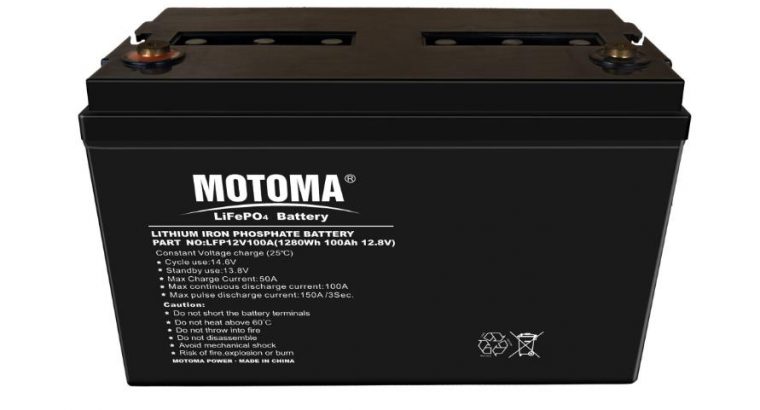What is Lithium Iron Phosphate Battery?

Are you looking for a more environmentally friendly and sustainable battery option? Lithium iron phosphate battery may be the answer.
The Lithium Iron Phosphate battery is a type of lithium-ion rechargeable battery. Lithium Iron Phosphate batteries, also known as LFP or LiFePO4 batteries. It uses LiFePO4 as the cathode material & a graphitic carbon electrode with a metallic backing as the anode.
Main Features of LFP Batteries
Longer cycle life.
Slow capacity loss.
Zero maintenance.
Extremely safe.
High Energy Density.
Lightweight.
High discharge/charge efficiency.

Advantages of LiFePo4 Batteries
Very safe and secure technology (No Thermal Runaway)
Very low toxicity for the environment (use of iron, graphite, and phosphate)
Calendar life > 10 ans
Cycle life: from 3000 to several thousand
Operational temperature range: up to 70°C
Low internal resistance. Stability or even decline over the cycles.
Constant power throughout the discharge range
Ease of recycling
Benefits of LiFePO4 Batteries
Lithium Iron Phosphate Batteries are replacing other battery technologies because of their technical advantages and very high level of safety.
LiFePO4 or LFP offers many benefits compared to lead-acid and lithium batteries.
The main advantages of LFP batteries are that they are much safer than lead-acid batteries.
LFP batteries do not release toxic gas during charging, eliminating the risk of fire or explosion. Additionally,
LFP batteries are more environmentally friendly because they do not contain heavy metals such as lead or cadmium.
LFP chemistry offers a considerably longer cycle life than other lithium-ion chemistries. Under most conditions, it supports more than 4,000 cycles; under optimal conditions, it supports more than 10,000 cycles.
LiFePO4 batteries offer several benefits over traditional lead-acid batteries.
LiFePO4 battery is safe, efficient, and has a super long life.
LFP Batteries have a high energy density, high stability, high-temperature performance, super long cycle life, environmentally friendly, and other advantages.
Lithium Iron Phosphate battery Usage
Electric Veichals more and more widely use liFePO4 batteries.
The long service life of the LFP and the possibility of deep cycling make it possible to use LiFePO4 in energy storage applications.
LPF battery is more famous for small and large energy storage systems (ESS) used in communication base stations, Telecom Towers. and solar power systems.

Solar Power has become increasingly popular as the world looks for more sustainable energy sources.
LiFePo4 batteries are being touted as the future solar power storage solution.

Due to their compact size, high energy density, Long Life, and safest battery, lithium iron phosphate batteries are widely used in Home off-grid Solar Systems.
Due to its high power density., LiFePO4 Battery is used in medium-power traction applications, like robotics, AGV, E-mobility, last-mile delivery, marine traction, industrial vehicles, etc.
Lithium iron phosphate batteries (LiFePO4) have 100% of their capacity available. Additionally, their fast charge and discharge rates cause them to be an excellent fit for all sorts of applications. Fast charging reduces any downtime and increases efficiency. High-discharge pulse currents deliver bursts of power in a short amount of time.
Lithium Iron Phosphate technology allows the most significant number of charge/discharge cycles. That is why this LiFePo4 is mainly adopted in stationary energy storage systems (self-consumption, Off-Grid, UPS, etc.) for applications requiring extended life.
Comments are closed.

[…] topic with the ever-growing popularity of solar energy. More and more people are considering using LFP batteries for solar power […]
[…] energy stored in rechargeable batteries is a valuable resource. Different types of batteries offer various advantages and disadvantages. To […]
[…] anode, a cathode, and a separator. The anode and cathode are typically made of either graphite or lithium iron phosphate and the separator is designed to prevent electrical current from flowing between the two […]
[…] and are widely used in consumer electronics such as smartphones and laptops. Another common type of lithium-ion cell is the lithium iron phosphate (LiFePO4) cell. These cells have a lower nominal voltage of 3.2 volts but are known for their long […]